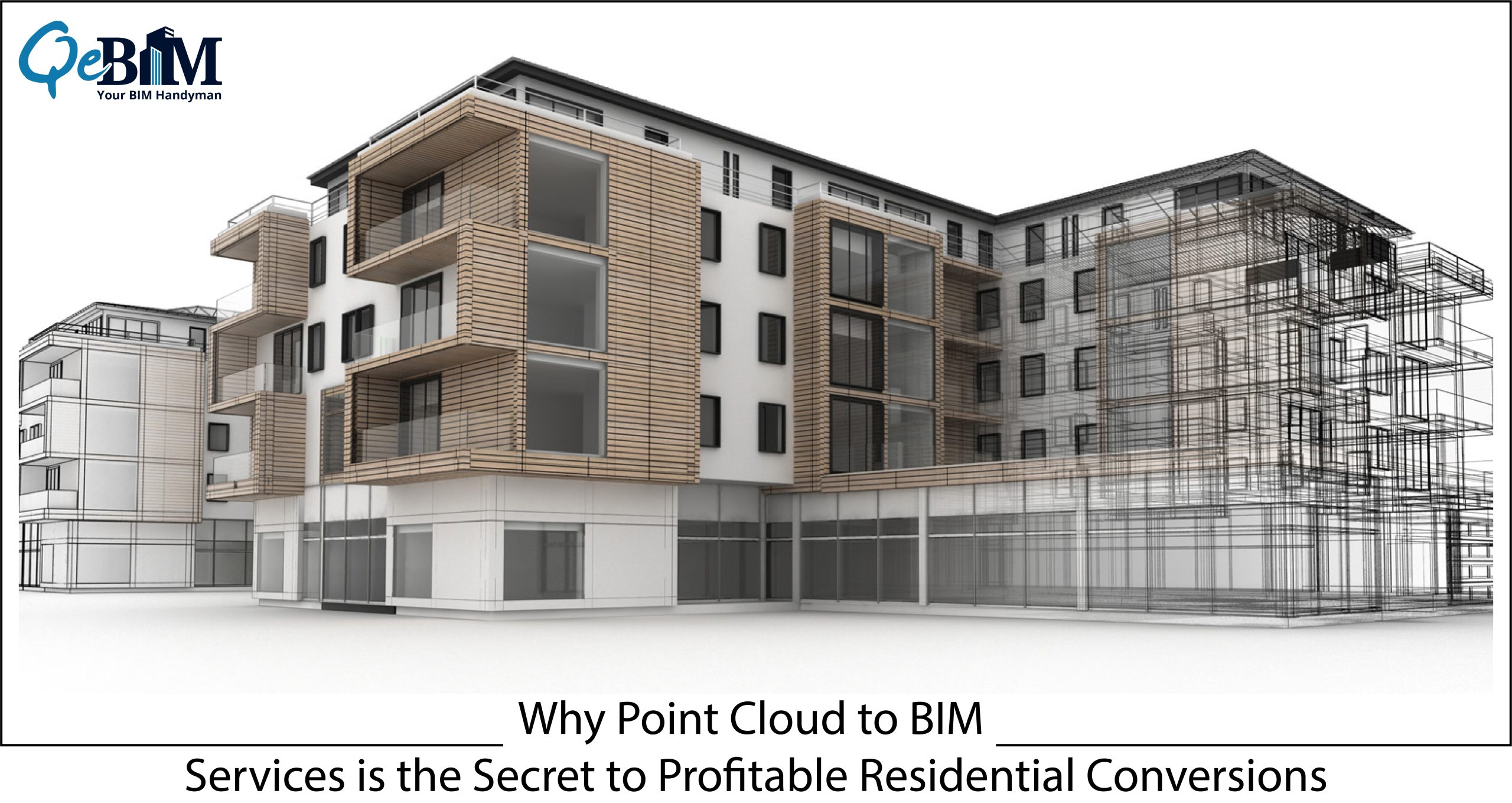Why Point Cloud to BIM Services is the Secret to Profitable Residential Conversions

Introduction
The construction business does not constitute a contributing factor to the ongoing advancement of technological devices. The implementation of the cloud of points models over transforming existing buildings into residential spaces constitutes an example of the most recent developments in construction technology. Scan to BIM Services have increased in popularity as a growing number of construction workers become knowledgeable about their advantages. In this piece, we’re going to look more closely into how point cloud models might prove useful for transforming existing buildings into homes.
A complex job that necessitates a thorough knowledge of the building’s structure, as well as design, involves transforming current structures into residential areas. Point cloud models have blossomed into a useful resource for workers in the architecture, engineering, and construction (AEC) sectors within the past few decades. The way that buildings have been constructed, refurbished, and kept is evolving as a result of the implementation of Point Cloud to BIM Services.
What are models for point clouds?
Let’s start by defining point cloud models. A point cloud has been a sizable collection of 3D points that depicts a thing or space’s interior or exterior substrate. By scanning thousands of objects with a laser reader, point cloud models can be generated.
Point cloud models, which are produced through the utilization of laser scanning or photogrammetry, are in-depth illustrations of actual physical items or surroundings. These models originate by gathering a large number of data points and processing them to produce a digital 3D image. The final point cloud model accurately captures the physical space’s features, such as its form, dimensions, and structure.
What is BIM
A digital representation of a structure that includes details regarding its creation, construction, and upkeep is commonly referred to as a “building information model,” or BIM. BIM remains a potent tool that allows suppliers, technicians, and developers to work together on construction projects virtually, lessening expenses and mishaps. Making use of BIM, it is feasible to make accurate, detailed 3D models that could indeed be utilized to visualize the building before construction starts.
Let’s now talk about how point cloud models may assist with this procedure:
- Precision and Effectiveness
Scan to BIM as well as a point cloud to BIM solutions offer extraordinarily precise and effective 3D modeling options. An extremely precise 3D model of the current framework might be created through the utilization of point cloud models to record millions of data points with great accuracy utilizing laser scanning technological advances. Lowering the requirement over on-site measurements as well as manual input enables more effective and precise changes while simultaneously conserving both money and time. - Improved Visualization
Point cloud models offer an improved graphical representation of the current building, enabling designers and builders to see the area clearly and make wise choices. The 3D model makes it simpler for creators to conceptualize as well as design the transformation procedure by enabling them to quickly evaluate the current framework along with pinpointing possible difficulties with design. - Better Communication
Point cloud models are additionally capable of helping the design team along with the customer communicate more effectively. Customers may arrive at determinations and offer suggestions more easily with the help of an exceptionally comprehensive 3D model that helps them comprehend the design that has been suggested. Lowering the possibility of misunderstandings and design mistakes assists to make sure that the finished product satisfies the requirements of the customer. - Lessens Risks
Error risk decreases considerably when Point Cloud to BIM Services are used. The extraordinarily precise point cloud information guarantees the accuracy of the final three-dimensional models while allowing for the swift identification and resolution of any possible problems. - Accurate Measurements
Correct measurements are provided by point cloud data, which is of the utmost importance while transforming old buildings into residential properties. With the help of this information, exact floor plans, ceiling height calculations, as well as area calculations for required accommodations may all be made. - Cost-Effective
The expenses of transforming existing buildings into residential spaces are frequently high, however, point cloud to BIM, as well as Scan to BIM services, can assist. Before building even starts, designers may discover possible issues with the design as well as come up with resolutions by employing an exceptionally realistic 3D model of the structure that currently exists. This makes it easier to maintain the job within budget and lessens the demand for expensive modifications. - The concept of sustainability
Point cloud models are additionally capable of helping the building sector advance sustainability. We may decrease the requirement for the construction of new buildings through the use of current buildings, which could decrease the sector’s carbon footprint. The negative environmental effect regarding point cloud models could be even more minimized by identifying sections in which energy-saving techniques may be applied.
Conclusion
In summation, the conversion of existing buildings to residential spaces may greatly benefit from Point Cloud to BIM Services as well as Scan to BIM services. These offerings offer cost-effective, sustainable, precise, reliable, and effective 3D modeling alternatives. They also enhance visualization as well as interpersonal interaction. Designers may quickly evaluate the current framework and create efficient design alternatives using point cloud designs, lowering the possibility of mistakes and postponement. Point cloud models will likely be used more frequently within the construction business as technological advances develop, improving the efficiency, affordability, and sustainability of converting existing buildings to residential areas.